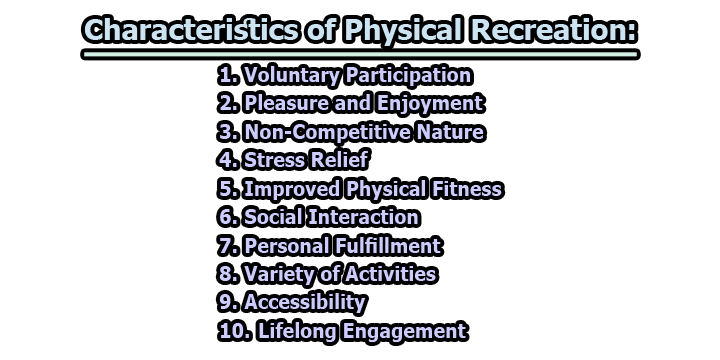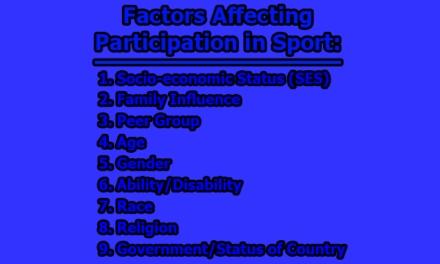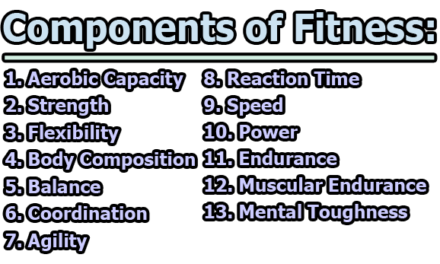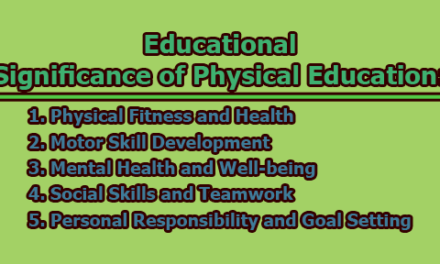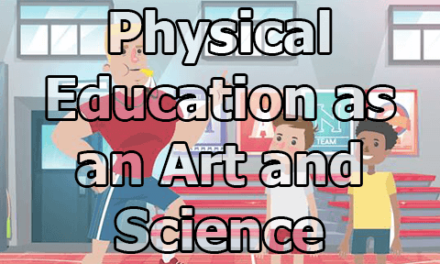Physical Recreation:
Physical recreation is an essential aspect of human life that involves engaging in various physical activities and exercises for the purpose of leisure, enjoyment, and relaxation. It encompasses a wide range of activities, from individual sports like running and swimming to team sports like soccer and basketball, as well as outdoor adventures such as hiking and camping. Physical recreation is a crucial component of a healthy lifestyle and provides numerous benefits to individuals, including physical fitness, stress relief, social interaction, and personal fulfillment. In this article, we will delve into the definition and characteristics of physical recreation, exploring its significance in modern society and the diverse activities that fall under its umbrella.
Definition of Physical Recreation:
Physical recreation, often simply referred to as “recreation,” can be defined as the voluntary and pleasurable engagement in physical activities and exercises that are not directly related to work, competition, or professional training. It is a form of leisure pursuit that individuals undertake for relaxation, enjoyment, and personal satisfaction. While physical recreation involves physical exertion, it is distinct from competitive sports and professional training, as the primary goal is not to win or achieve a specific performance outcome but to have fun and enhance one’s overall well-being.
Characteristics of Physical Recreation:
Here are the key characteristics of physical recreation:
1. Voluntary Participation: One of the defining characteristics of physical recreation is that it is a voluntary activity. Individuals engage in physical recreation because they choose to do so, not because they are compelled or obligated. This voluntary aspect is essential as it allows individuals to select activities that align with their interests and preferences, contributing to a more enjoyable and satisfying experience.
2. Pleasure and Enjoyment: The fundamental purpose of physical recreation is to provide pleasure and enjoyment to participants. It offers a break from the routine demands of daily life, allowing individuals to experience moments of relaxation, fun, and happiness. The intrinsic joy derived from physical recreation is a significant motivator for people to participate in various activities.
3. Non-Competitive Nature: Unlike competitive sports or professional training, physical recreation is non-competitive in nature. While some recreational activities may involve friendly competition, the primary focus is not on winning but on the experience itself. Participants are free from the pressure of performing at a high level or achieving specific goals.
4. Stress Relief: Physical recreation serves as an effective stress relief mechanism. Engaging in recreational activities helps individuals release built-up tension and stress, promoting mental and emotional well-being. The release of endorphins during physical exercise also contributes to reduced stress levels and an improved mood.
5. Improved Physical Fitness: Physical recreation is an excellent way to improve physical fitness. Many recreational activities involve cardiovascular exercise, strength training, flexibility, and coordination, leading to enhanced overall fitness. Regular participation in recreational activities can help individuals maintain a healthy weight, improve cardiovascular health, and increase muscle strength.
6. Social Interaction: Physical recreation often involves social interaction, as many activities are best enjoyed with others. Team sports, group fitness classes, and recreational clubs provide opportunities for individuals to connect with others, build friendships, and strengthen social bonds. This social aspect of physical recreation can enhance mental and emotional well-being.
7. Personal Fulfillment: Engaging in physical recreation can provide a sense of personal fulfillment and accomplishment. Trying new activities, setting and achieving personal goals, and overcoming challenges contribute to a sense of self-worth and satisfaction. Physical recreation allows individuals to explore their capabilities and push their limits, leading to personal growth and development.
8. Variety of Activities: Physical recreation encompasses a wide variety of activities, ensuring that there is something for everyone. Whether it’s outdoor activities like hiking, cycling, and camping or indoor pursuits like dancing, yoga, and swimming, individuals can choose activities that align with their interests, abilities, and physical fitness levels.
9. Accessibility: Many recreational activities are accessible to people of all ages, backgrounds, and physical abilities. This inclusivity is a key characteristic of physical recreation, making it an activity that can be enjoyed by individuals from diverse demographic groups. It promotes a sense of community and belonging.
10. Lifelong Engagement: Physical recreation is a lifelong pursuit. Unlike competitive sports, which often have age restrictions, physical recreation can be enjoyed at any stage of life. It provides opportunities for individuals to stay active, healthy, and engaged in leisure activities throughout their lifespan.
Significance of Physical Recreation in Modern Society:
Physical recreation plays a significant role in modern society, contributing to the overall well-being of individuals and communities. Its importance can be understood through various dimensions:
1. Physical Health: Physical recreation is a cornerstone of physical health. Regular engagement in recreational activities helps individuals maintain a healthy weight, reduce the risk of chronic diseases (e.g., heart disease, diabetes), and improve overall physical fitness. It promotes an active lifestyle, which is crucial in combating the sedentary habits associated with modern living.
2. Mental Health: The positive impact of physical recreation on mental health cannot be overstated. It serves as a natural stress reliever, reducing anxiety and depression. The release of endorphins during exercise enhances mood and boosts mental clarity. Furthermore, the social aspect of recreational activities fosters a sense of belonging and reduces feelings of loneliness and isolation.
3. Social Interaction: Physical recreation facilitates social interaction and community engagement. Participating in group activities or joining recreational clubs provides opportunities to meet new people, strengthen existing relationships, and build a supportive social network. These connections contribute to improved emotional well-being and a sense of belonging.
4. Personal Growth: Engaging in physical recreation encourages personal growth and development. It allows individuals to set and achieve personal goals, build self-confidence, and overcome challenges. Trying new activities and pushing one’s limits fosters a sense of accomplishment and self-discovery.
5. Work-Life Balance: In a fast-paced and often stressful modern work environment, physical recreation offers a valuable means of achieving work-life balance. It provides a break from the demands of work, allowing individuals to recharge and rejuvenate. This, in turn, can lead to increased productivity and job satisfaction.
6. Education and Skill Development: Physical recreation provides opportunities for education and skill development. Participants can learn new skills, techniques, and strategies related to various activities. This not only adds to their knowledge base but also enhances their ability to engage in the activity effectively.
7. Community Building: Communities benefit from physical recreation by creating spaces and opportunities for people to come together. Parks, recreational facilities, and organized events promote community cohesion and a sense of pride. These spaces also promote family bonding and intergenerational activities.
8. Cultural Preservation: Some forms of physical recreation are deeply rooted in culture and tradition. These activities serve as a means of preserving cultural heritage and passing down traditions to future generations. They contribute to cultural identity and identity preservation.
9. Environmental Awareness: Many physical recreational activities take place outdoors, fostering a deeper connection to nature and environmental awareness. Participants often develop a greater appreciation for natural landscapes, leading to increased support for conservation efforts.
10. Economic Impact: Physical recreation can have a significant economic impact on communities. It supports industries related to sports equipment, outdoor gear, fitness facilities, and tourism. Additionally, recreational events and activities can attract visitors and generate revenue for local businesses.
Types of Physical Recreation Activities:
Physical recreation encompasses a wide array of activities, catering to the diverse interests and preferences of individuals. Here are some common types of physical recreational activities:
- Sports: Sports such as soccer, basketball, tennis, and golf are popular forms of physical recreation. These activities can be played casually with friends or as part of organized leagues.
- Outdoor Adventures: Outdoor activities like hiking, camping, rock climbing, and kayaking provide opportunities for individuals to connect with nature and explore the great outdoors.
- Dancing: Dance forms like salsa, ballet, hip-hop, and ballroom dancing are not only enjoyable but also great forms of exercise and self-expression.
- Fitness Classes: Group fitness classes, including yoga, Pilates, spin, and CrossFit, offer structured workouts led by instructors. These classes provide both physical activity and social interaction.
- Martial Arts: Martial arts disciplines such as karate, judo, taekwondo, and Brazilian jiu-jitsu combine physical fitness with self-defense skills.
- Swimming: Swimming is a versatile recreational activity suitable for all ages. It not only provides an excellent cardiovascular workout but is also refreshing and enjoyable.
- Cycling: Whether it’s road cycling, mountain biking, or leisurely bike rides in the park, cycling is an eco-friendly and health-promoting form of recreation.
- Team Building Activities: Many organizations and groups engage in team-building activities such as ropes courses, trust falls, and problem-solving challenges as a form of physical recreation.
- Gardening: While not traditionally seen as a physical activity, gardening involves a fair amount of physical labor and can be a relaxing and satisfying recreational pursuit.
- Recreational Games: Activities like table tennis, badminton, cornhole, and bowling offer a mix of skill and fun for participants of all skill levels.
- Aerobics and Aerobic Dance: These activities combine music, movement, and cardiovascular exercise to create an enjoyable fitness experience.
- Skiing and Snowboarding: Winter sports enthusiasts can enjoy skiing and snowboarding as recreational activities during the colder months.
- Frisbee and Disc Golf: These low-cost and accessible activities encourage outdoor play and friendly competition.
- Nature Walks and Birdwatching: Exploring natural settings through leisurely walks or birdwatching provides both physical activity and a deep connection to the environment.
- Water Sports: Activities like paddleboarding, canoeing, and water skiing are ideal for those near lakes, rivers, or oceans.
- Archery: Archery is a precision sport that combines skill and focus with a recreational aspect.
- Fishing: Anglers find relaxation and enjoyment in fishing as a way to connect with nature and experience the thrill of catching fish.
- Trampoline Parks: These indoor facilities feature trampolines and foam pits, offering a fun and energetic recreational experience.
- Adventure Parks: Zip-lining, rope courses, and obstacle challenges in adventure parks provide exhilarating and confidence-building activities.
- Equestrian Activities: Horseback riding and horse care offer both physical exercise and a unique bond with animals.
- Skateboarding and Rollerblading: These urban activities are popular among youth and offer a creative and physically active outlet.
- Golf: Golf is a leisurely sport that combines physical activity with a relaxed atmosphere and social interaction.
- Parkour: Parkour enthusiasts use their bodies to navigate obstacles in urban environments, emphasizing agility and creativity.
- Indoor Climbing: Indoor climbing gyms provide a controlled environment for rock climbing, bouldering, and rope climbing.
- Geocaching: A modern form of treasure hunting, geocaching involves using GPS devices to locate hidden caches in the outdoors.
These are just a few examples of the diverse range of physical recreational activities available. Individuals can choose activities that align with their interests, fitness levels, and available resources, ensuring that physical recreation remains an inclusive and accessible pursuit.
Benefits of Physical Recreation:
Physical recreation offers a multitude of benefits to individuals and communities. These advantages extend to physical, mental, emotional, and social well-being:
- Improved Physical Fitness: Engaging in regular physical recreation promotes physical fitness by enhancing cardiovascular health, increasing muscle strength, improving flexibility, and promoting healthy body composition. It contributes to weight management and reduces the risk of chronic diseases.
- Stress Reduction: Physical recreation is an effective stress management tool. Exercise releases endorphins, which act as natural mood lifters. Engaging in enjoyable activities helps individuals relax and unwind, reducing stress levels.
- Mental Clarity and Cognitive Benefits: Physical activity has been linked to improved cognitive function and mental clarity. Regular engagement in physical recreation may enhance memory, concentration, and problem-solving abilities.
- Emotional Well-being: Participating in physical recreation can improve emotional well-being by reducing symptoms of anxiety and depression. It provides an outlet for processing emotions and increasing self-esteem.
- Social Interaction and Relationships: Many physical recreational activities involve group participation, providing opportunities to build and strengthen social connections. These interactions contribute to a sense of belonging and support.
- Personal Growth and Self-Esteem: Overcoming challenges and setting and achieving goals in recreational activities can boost self-esteem and self-confidence. It fosters personal growth and a sense of accomplishment.
- Lifelong Learning: Physical recreation often involves acquiring new skills and knowledge related to specific activities. This continuous learning aspect keeps individuals engaged and mentally stimulated.
- Increased Energy Levels: Engaging in regular physical activity can increase overall energy levels. This leads to improved vitality and a greater sense of well-being.
- Better Sleep: Physical recreation can positively impact sleep quality and duration. Regular exercise has been shown to help individuals fall asleep faster and enjoy deeper, more restful sleep.
- Community Cohesion: Physical recreation fosters a sense of community and belonging. Shared recreational activities bring people together, promoting social cohesion and a sense of pride in one’s community.
- Healthy Aging: Staying active through physical recreation can contribute to healthy aging by maintaining mobility, balance, and overall physical function as individuals grow older.
- Cultural and Environmental Awareness: Some recreational activities, such as hiking and nature walks, cultivate a deeper appreciation for culture and the environment, leading to greater awareness and conservation efforts.
- Work-Life Balance: Engaging in physical recreation provides a break from work-related stressors, contributing to improved work-life balance and overall job satisfaction.
- Enhanced Creativity: Physical recreation can stimulate creativity and problem-solving abilities by providing an outlet for relaxation and fresh perspectives.
- Self-Expression: Activities like dance and art-related recreational pursuits allow individuals to express themselves creatively and emotionally.
- Healthcare Cost Reduction: Regular participation in physical recreation can lead to reduced healthcare costs by preventing or managing chronic diseases and reducing the need for medical intervention.
- Economic Impact: The recreational industry generates revenue and employment opportunities in areas such as fitness facilities, sports equipment, and tourism, contributing to local and national economies.
- Family Bonding: Engaging in physical recreation as a family promotes bonding, communication, and the development of shared interests among family members.
- Personal Satisfaction: Achieving personal goals and pursuing recreational interests provide a sense of satisfaction and fulfillment.
- Life Balance: Physical recreation contributes to a balanced and holistic lifestyle by addressing physical, mental, emotional, and social aspects of well-being.
It’s important to note that the benefits of physical recreation are not limited to any specific age group or demographic. People of all ages, backgrounds, and abilities can enjoy the advantages of engaging in recreational activities.
Barriers to Participation in Physical Recreation:
While physical recreation offers numerous benefits, several barriers may limit individuals’ participation in these activities. Understanding these barriers is essential for promoting inclusivity and ensuring that more people can enjoy the benefits of physical recreation:
- Time Constraints: Busy work schedules, family responsibilities, and other commitments can limit the amount of time individuals have available for recreational activities.
- Financial Constraints: The cost associated with equipment, gym memberships, and participation fees for certain recreational activities can be a barrier for individuals with limited financial resources.
- Lack of Access: Some communities may lack access to recreational facilities, parks, or safe outdoor spaces, limiting opportunities for physical recreation.
- Physical Disabilities: Individuals with physical disabilities may face challenges finding suitable recreational activities and accessible facilities.
- Lack of Motivation: Some people may struggle with finding the motivation to engage in physical recreation, particularly if they do not find the activities enjoyable.
- Fear of Judgment: Concerns about being judged by others for physical appearance or skill level can deter some individuals from participating in group activities.
- Health Concerns: Certain health conditions or injuries may limit an individual’s ability to engage in certain types of physical recreation.
- Knowledge and Skill Gaps: Lack of knowledge or skills related to specific recreational activities can be a barrier for beginners.
- Cultural and Gender Barriers: Cultural norms and gender stereotypes may discourage individuals from participating in certain recreational activities that are perceived as incompatible with their culture or gender.
- Geographic Barriers: Geographic isolation or living in rural areas with limited access to recreational facilities and programs can limit participation.
- Safety Concerns: Fear of injury or concerns about personal safety in certain recreational activities may deter individuals from participating.
Efforts to promote physical recreation should address these barriers through strategies such as providing affordable options, creating inclusive and accessible environments, offering beginner-friendly programs, and fostering a supportive and judgment-free atmosphere.
In conclusion, physical recreation, defined by its voluntary and enjoyable nature, plays an indispensable role in enhancing the well-being of individuals and communities. It offers a diverse array of activities that cater to a wide range of interests and abilities, promoting physical fitness, mental health, and social interaction. By fostering relaxation, personal growth, and a sense of belonging, physical recreation contributes to a more balanced and fulfilling life. Recognizing the barriers to participation and actively working to overcome them is essential in ensuring that everyone has the opportunity to reap the numerous benefits that physical recreation has to offer. In embracing the significance of physical recreation, we embark on a journey toward healthier, happier, and more connected societies.
References:
- Henderson, K. A. (2017). Comprehensive school physical activity programs: Putting research into practice. Human Kinetics.
- Carr, D., & Weigand, D. (2017). Physical activity and sport in the lives of girls: Physical and emotional well-being. Routledge.
- Ko, Y. J., & Sagas, M. (Eds.). (2017). Sport and physical activity in the heat: Maximizing performance and safety. Routledge.
- Hawkins, B. L., & Bedford, A. (2019). Physical activity assessment and promotion in public health practice. CRC Press.
- Torkildsen, G. (2005). Sport and recreation management. Routledge.
- World Health Organization (WHO). (2020). Physical Activity and Adults. Retrieved from https://www.who.int/news-room/fact-sheets/detail/physical-activity.
- Cotterill, S., & Frömel, K. (Eds.). (2019). Physical activity in sport and recreation: A critical social scientific perspective. Routledge.
- Kumar, A., & Mehta, S. (2016). Influence of physical activities on stress, anxiety and depression level: A case study of Amity University, India. Asian Journal of Sports Medicine, 7(1).
- Crespo, C. J., Smit, E., Andersen, R. E., Carter-Pokras, O., & Ainsworth, B. E. (2000). Race/ethnicity, social class and their relation to physical inactivity during leisure time: Results from the Third National Health and Nutrition Examination Survey, 1988–1994. American Journal of Preventive Medicine, 18(1), 46-53.
- S. Department of Health and Human Services. (2008). Physical Activity Guidelines for Americans. Retrieved from https://health.gov/sites/default/files/2019-09/paguide.pdf.

Former Student at Rajshahi University

